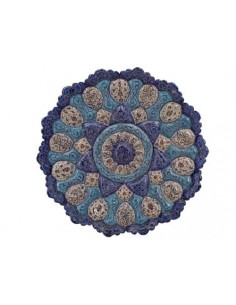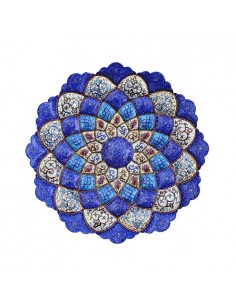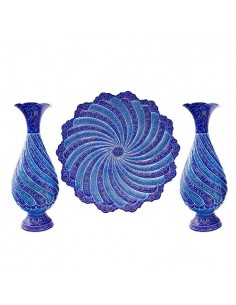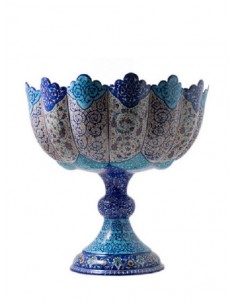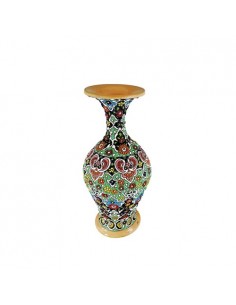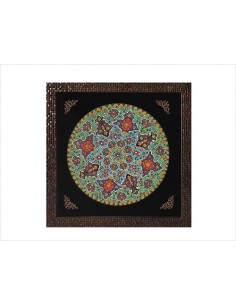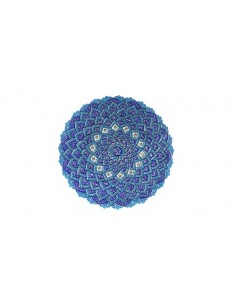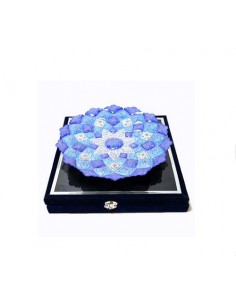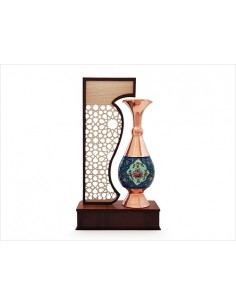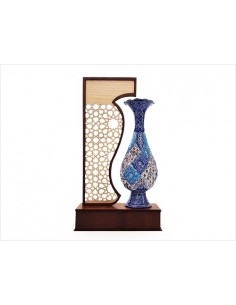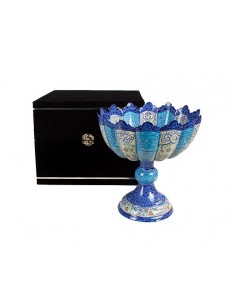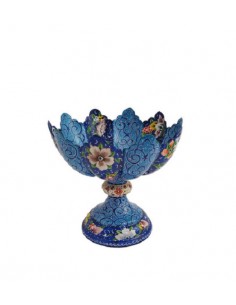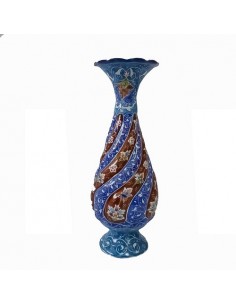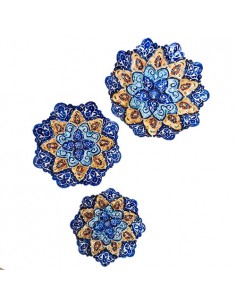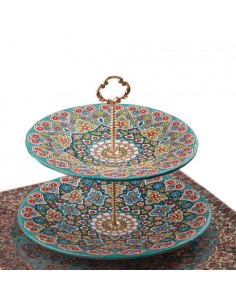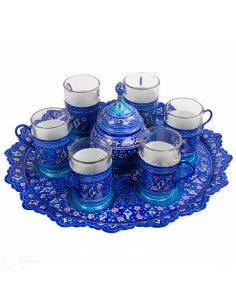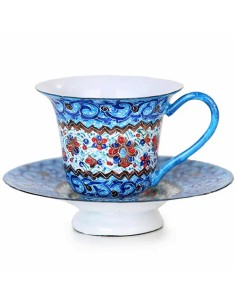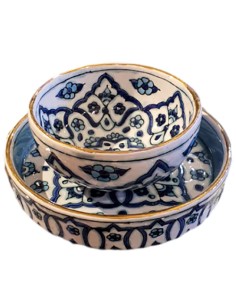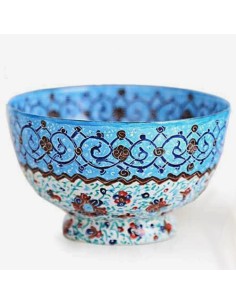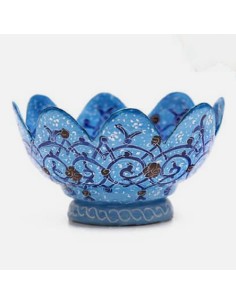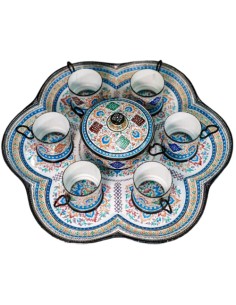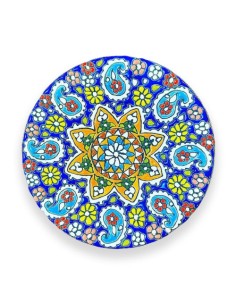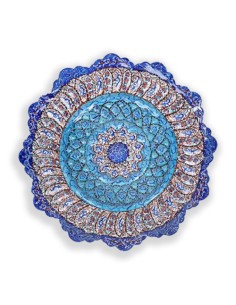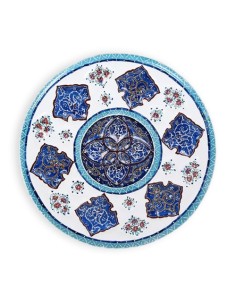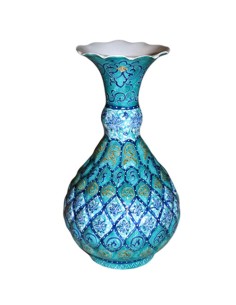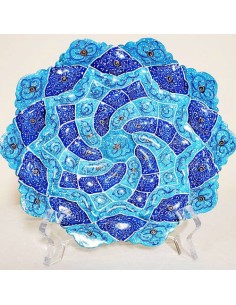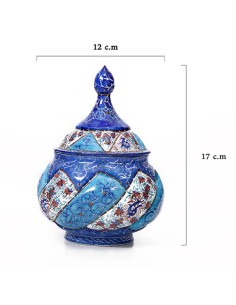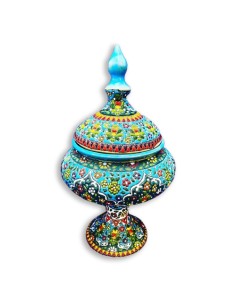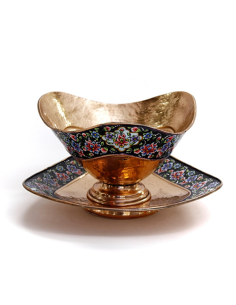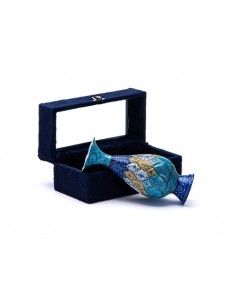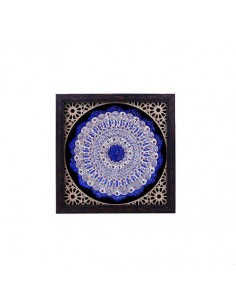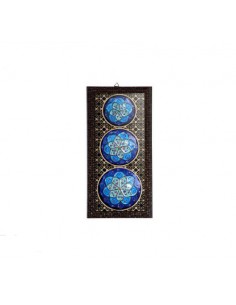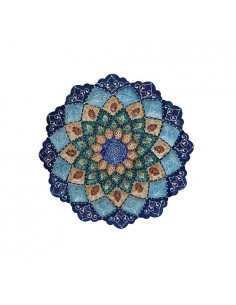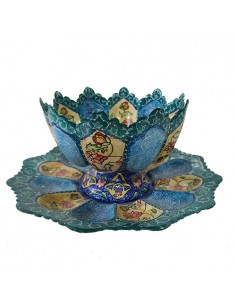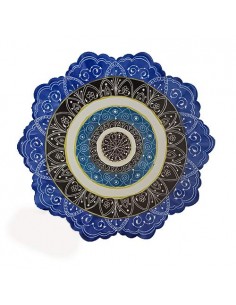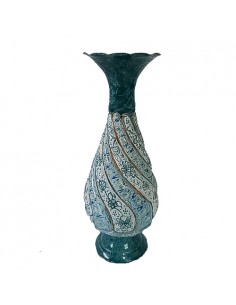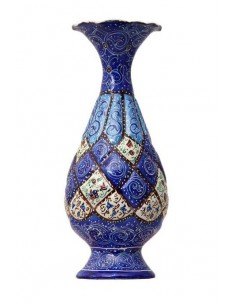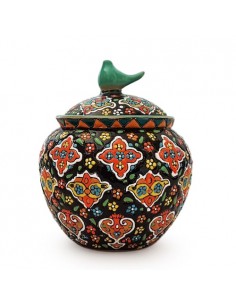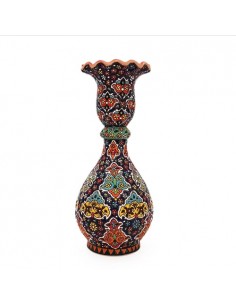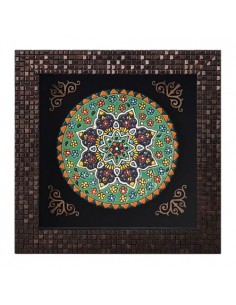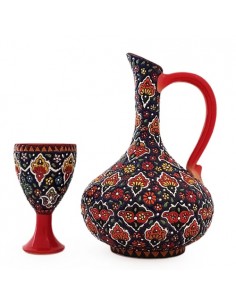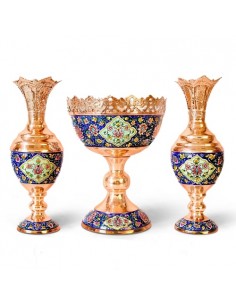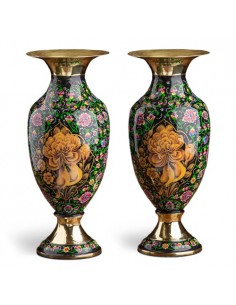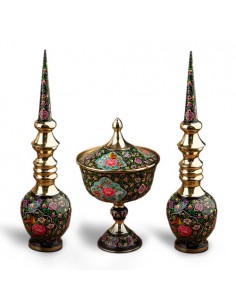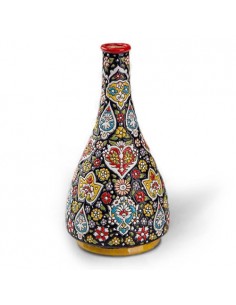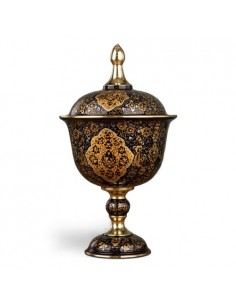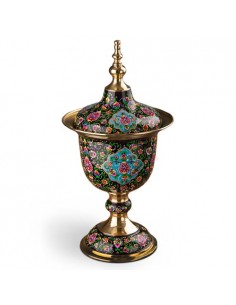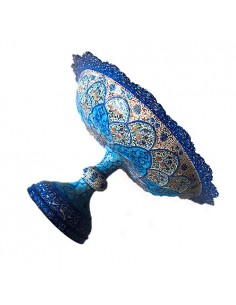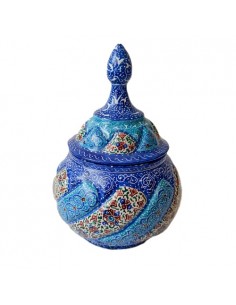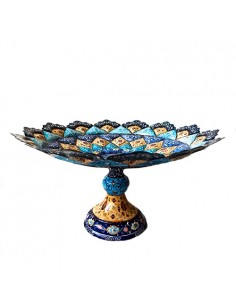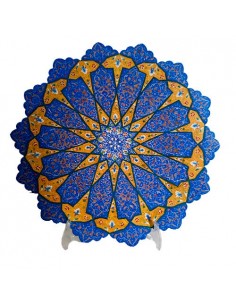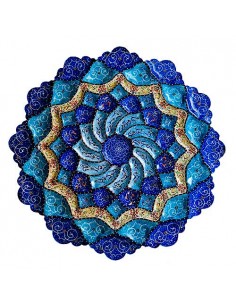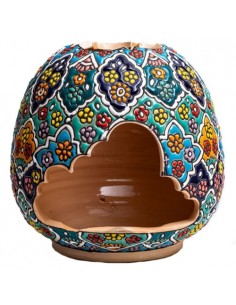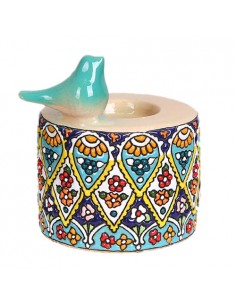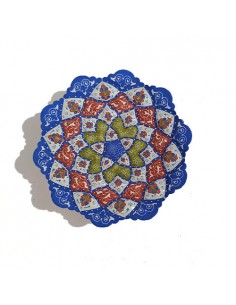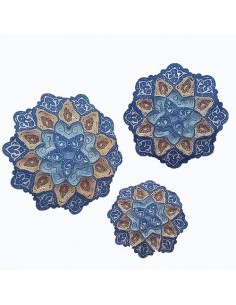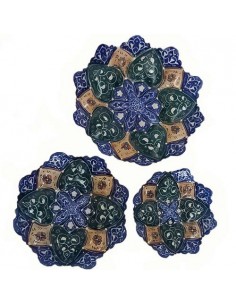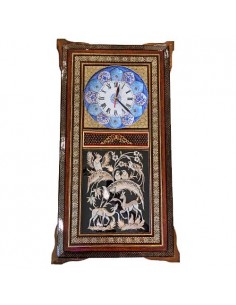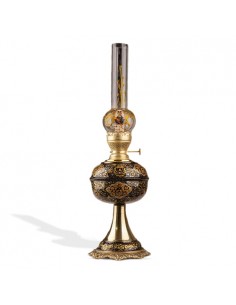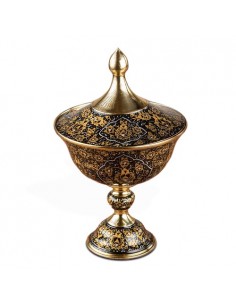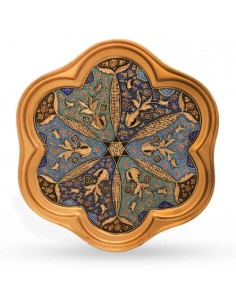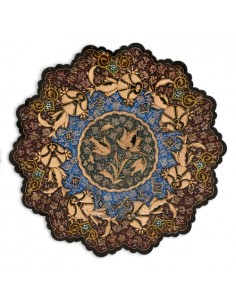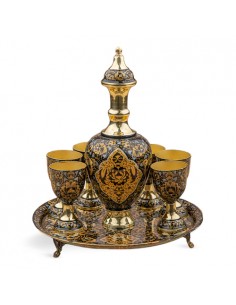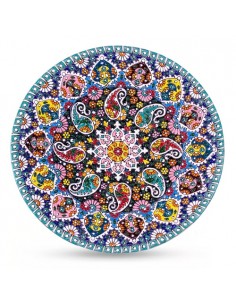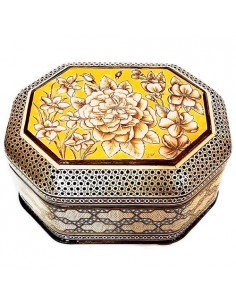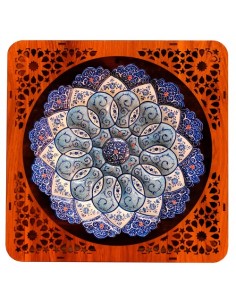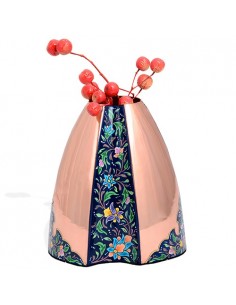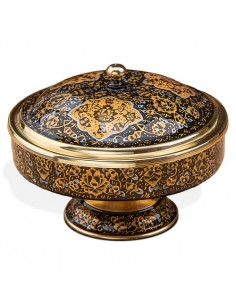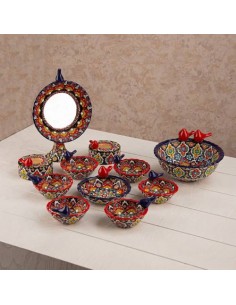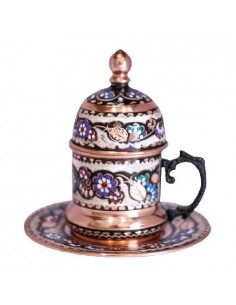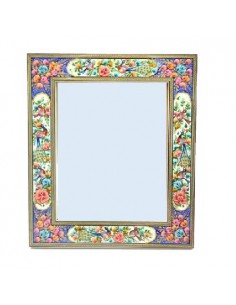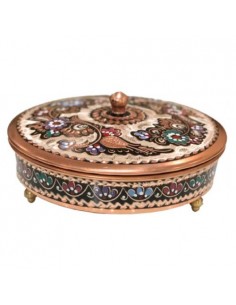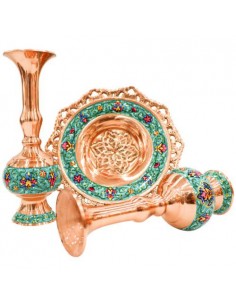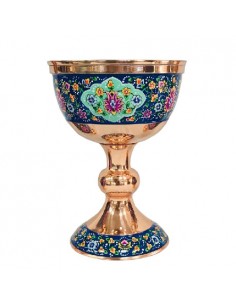Minakari the Persian Art of Enameling
The Minakari art, or Persian enameling, is a way of decorating objects using some methods known as painted enamel (Mina) techniques. It is a type of artful handicraft—one of the most prominent and iconic forms of Persian art and crafts. Moreover, there are other forms of handicrafts worldwide, like the Persian Mina Kari, the most famous of which is Talavera, which originated in the United States of America and Canada, and the other is Meenakari jewelry making, which was born in India.
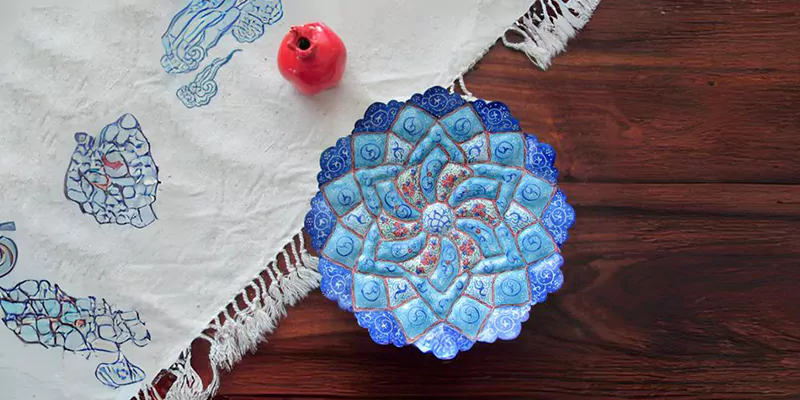
Cyrus Crafts; Luxury & Unique Products
What is Minakari?
Minakari is the art of painting intricate and stunning designs on surfaces of metals, pottery, etc. Enamel painting, called Mina Kari, is highly similar to vitreous enamel. The bases of Persian Meenakari are typically ceramics, porcelain, pottery, and metal, such as gold, copper, silver, brass, and glass.) Here you go with the lexicological meaning of this art's name.
Minakari Meaning
To define this word, we should divide it into its components. In the Farsi language, "Mina" means glass, specifically colorful glass, and "Kari" refers to works done technically, mainly by hand. So, lexicologically, "Minakari" means creating crafty, colorful glasses. But during history, this art form grew and brought more than glass working. Nowadays, making multicolor motifs on various types of materials is called Minakari art or painted enamel.
Moreover, some believe that Mina, or Meena, is the other form of the Farsi word Minoo, which means heaven or the blue sky. So, Mina Kari would mean picturing heaven or the blue sky.
History of Minakari
Minakari has a history of over 5000 years. According to evidence from comparisons between Byzantine enamel and Iranian Mina handicrafts, they have proved that the first enamel artworks originated in ancient Persia. Historical artifacts such as six gold rings from the 13th century BC in Cyprus and the renowned Greek statue of Zeus adorned with Minakari further strengthen this assertion despite its spread to other lands.
The first Mina art samples date back to the Achaemenid period. In later periods, like the Sassanian era, it spread to other regions like Armenia. It has been a symbol of Persian craftsmanship, influencing and captivating artisans worldwide.
This craft flourished around 1500 BC, primarily during the Seljuk era in Persia, reaching its peak with detailed motifs and designs such as Persian Miniature Painting for trimming various objects. Minakari developed across history, from the Timurid era's fusion with Eastern and Mongol art forms to Safavid innovations like hunting sets. Then, during the Qajar period and contemporary times, it remained a prominent Persian art format, evolving various objects like dishes and jewelry.
In other words, Persian enamel art transformed in the Mongol era, integrating Iranian motifs, and it also developed during the Safavid period with silver-based designs. The Qajar era witnessed Minakari predominantly in gold, with intricate designs reflecting religious and cultural motifs, culminating in acceptable signatures on shrines and tablets.
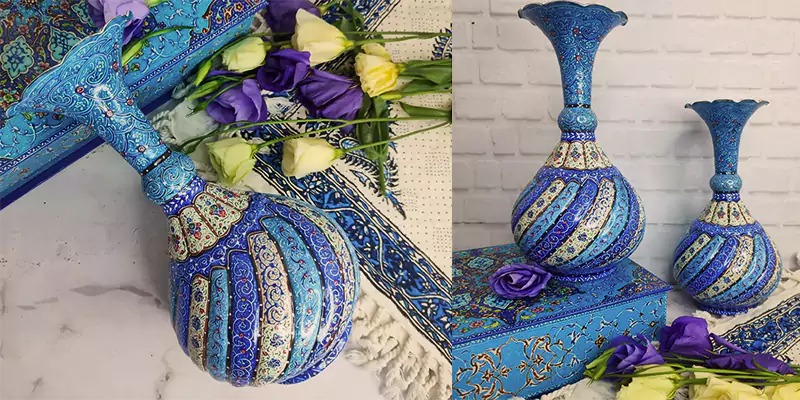
Types of The Persian Minakari Art
There are three main types of Persian Minakari art, according to the bare body on which the painting enamel is. Minakari is on pottery, metals, and glass. And in the following, you will briefly review these kinds of Persian enameling. After all, remember that art has no limitations; some young artisans are creating Minakari on wood products.
This art's most frequently used metals are copper, gold, silver, and brass. Copper and brass are used mainly in Minakari home decorative items and serving dishes, while gold and silver are typically proper for producing enameled jewelry. As enamel on copper and gold have much more usage than brass and silver, respectively, here we review copper and gold enamel in more detail.
Enamel on Copper
Copper enameling in Persia retains various styles according to the patterns and paintings done on the body. The most well-known styles are ordinary enamel on copper, "Mes o Pardaz," "Tasheer, also called Tashir," etc.
Enamel on Gold
Most people know the enamel on gold as Indian Meenakari. It is not false; a great art originated in India named Meena or Meenakari, primarily done on gold. But Persians have also been producing golden and silver minakari jewelry and accessories. And they are very similar because Indian and Persian cultures have always been so close. India used to be a part of the Great Persian Empire.
The boldest difference between the Indian Meena and Persian Mina is their painting motifs. Iranian artists draw Miniature, Slimi, Gol o Morgh, and other Persian designs on gold enamel jewelry pieces, whereas the Indian motifs differ.
Enamel on Pottery
Enamel on pottery, or ceramic Minakari, is mainly done on decorative vases and tableware items. It is full of bright colors that are orderly combined.
Enamel on Glass
Enamel on glass is the oldest type of Persian Minakari art. It is like two kinds of art you know as Vitray and Stained-glass nowadays. You see Persian Vitray mostly on home windows, decorative objects, and style accessories.
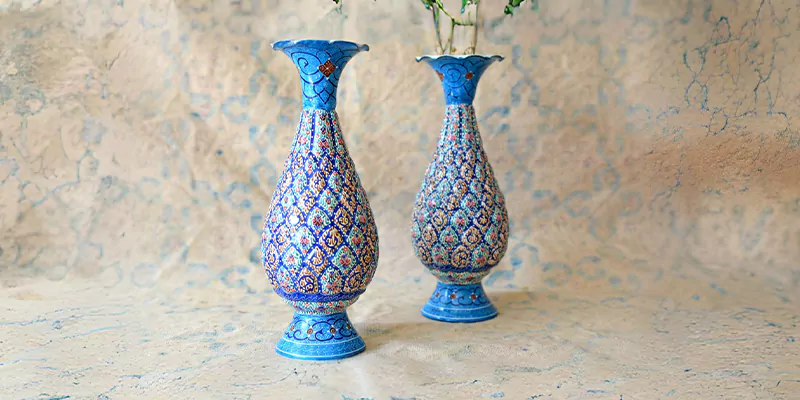
Minakari Crafting Process
Crafting a piece of Minakari art is a time-consuming process that includes different steps and design works using particular tools. So, here we review the steps towards creating a Mina handicraft and check the design process and tools.
Persian Minakari Steps
The Persian Minakari steps start with creating the base object. The craftsperson should make the primary structure, whether it finally will be on copper, pottery, glass, gold, etc. Then, the art of painting and dying starts. You should note that there are particular colors belonging to Persian Mina craft work. After painting and coloring with the colors and motifs mentioned in the following, the object gets glazed and is ready for use after going to the kiln.
Drawing and Dying Minakari
Drawing patterns and painting and dying them are the most prevalent steps of creating a Minakari Crafts. The patterns we know as Naqqashi Mina are specific Iranian painting motifs, such as Persian Miniature Painting, Bote Jeghe, Paisley, Flower & Bird, etc. The critical point about this art is that the artisan should dye all over the object's surface. It means that every single point on the cover should have a color.
Minakari Designer Colors
Which colors are common in Persian Minakari? There are specific Persian colors, which you can read entirely about in the CyrusCrafts magazine. The most frequently used tint is Persian Blue. After this fantastic blue hue, White, Turquoise, Persian Orange, Yellow, Red, and Green are the most prevalent Minakari designer colors. Nevertheless, vivid colors are the most frequently colors, used in Meenakari paintings.
Tools for Producing Minakari
In the first step, it depends on the type of minakari. For example, you need a pottery wheel and clay for a pottery minakari, but you will need toreutics and equipment for a brass minakari. After choosing the base, painting tools are almost the same. Drawing and painting brushes, specific paints, glazing material for coating, and kilns with temperatures of 750 to 850 degrees Celsius are proper for finishing the artwork.
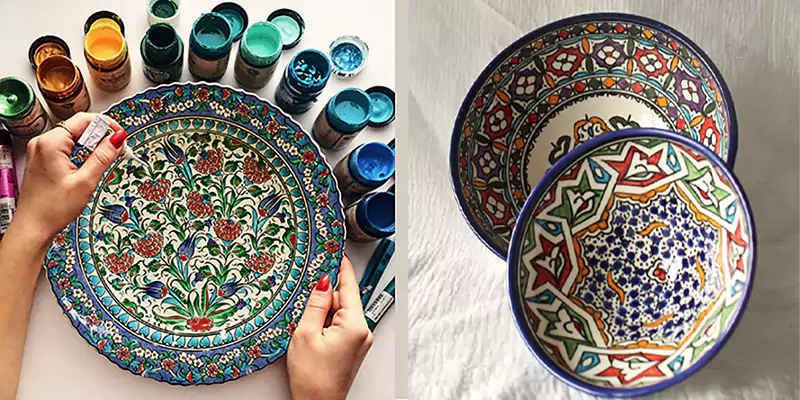
Minakari Art Usages
The Minakari art adorns metal and non-metal objects like pottery with ornamental designs. Works of enameling are among the wealthiest and most exquisite Persian handicrafts and have the following usages:
- Splendid and unique small decorative entities
- Memorable gifts for friends
- Promotional and corporate donations and awards
- Tableware items
- Decorating walls with the art of Naqashi Mina wall hanging plates
- Enameling accessories for a remarkable style
And you can add more uses in the comments section.
Different Minakari Products According to Usages
Minakari artists create a great variety of products according to their different usages, the most popular of which include:
- Homeware items, such as plates, bowls, serving dishes, picture frames, and framed meenakari — which are sometimes decorated, in combination with minakari, by crafts such as gilding, Khatamkari, miniature painting, and jewelry making
- Decorative objects such as vases, jewelry boxes, tea sets, armors, mirrors, hookahs, Quran boxes, pen cases, meenakari bubbles, snuff cases, rosewater pitchers, photo albums, dagger scabbards
- Enameling jewelry and style accessories, such as earrings, necklaces, rings, belts, and pendants
What Makes Minakari Products so Unique?
Minakari is making a stunning object and ornamenting it with unique motifs and colors. The artisan decorates each particle with their hands, and there is no machine work. Patterns are so tiny but full of details and color combinations. That is why every single Mina product is a unique masterpiece.
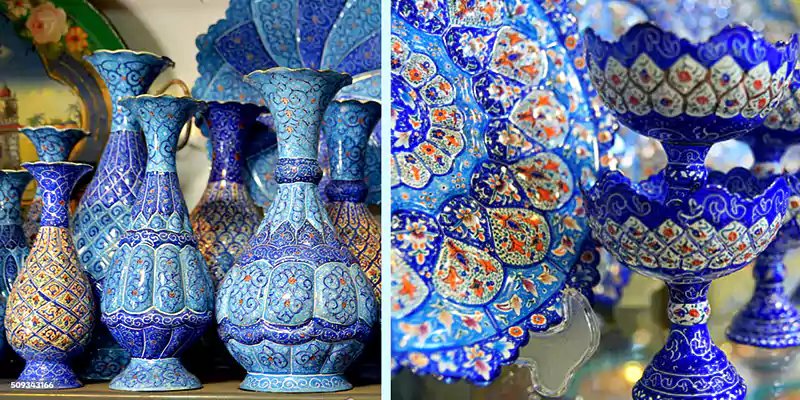
How to Keep a Persian Minakari Piece of Art?
Every piece of art needs some maintenance. Here are pieces of advice and tips for keeping Persian Minakari artworks:
- Thanks to their primary substance, glazing, and coating, humid weather doesn't harm glass and metal Minakari pieces. However, wooden or pottery Mina objects are better kept from humidity because their inner surfaces may not be glazed.
- The stroke is damaging to every material. So, be careful to put your Mina kari decorative items in safe places that don't have the risk of dropping.
- Be careful not to wash enameled objects with rigid fabrics. Warm water, dish detergents, and a regular textile are OK.
- Read the product's user manual to determine if it is dishwasher safe.
- Pottery decorative items are better cleaned with a wet towel instead of being washed with water. But if you need to wash them, dry them after washing.
Authentic Minakari: Distinguish Genuine Mina with 5 Factors
Distinguishing authentic Minakari crafts from fake ones is not challenging if you know the following factors:
- A genuine Mina includes detailed and miniature motifs and patterns.
- The surfaces of the actual Mina should be glossy.
- It should Be free of cracks, cuts, chips, bubbles, holes, or scratches.
- The evenness of paint thickness is another essential factor.
- High-class and intact glaze coating on the container's surfaces is crucial.
With these five characteristics, you can easily distinguish authentic Minakari crafts from fake ones.
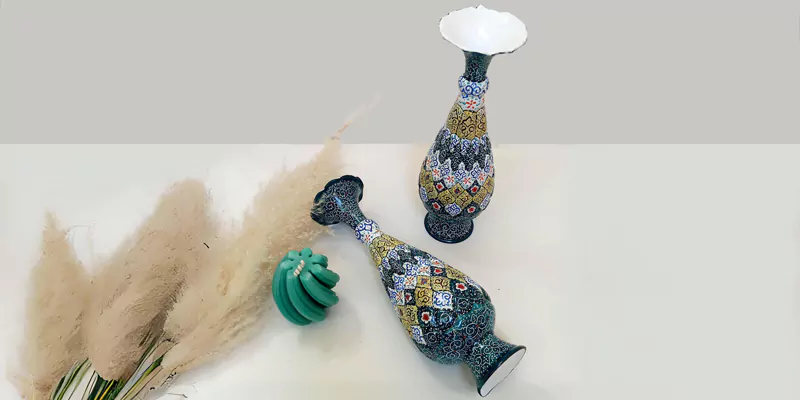
Minakari Buying Tips
As handicrafts, especially Minakari works, are valuable, you should first get information about their buying tips. Mina Kari's buying tips incorporate the following:
- The most critical matter is the seller because only reliable sellers can lead you toward the best Minakari products. So, try to find trustworthy retailers, stores, or online shops.
- In the second step, compare the prices offered by dedicated sellers. Remember that the fewer dealers between the producer and the customer, the lower the prices.
- Comparison only according to material and size is not enough when purchasing artful handicrafts. Because there may be differences in the details, it is best to get informed about the Minakari work of art classes.
- Being able to recognize authenticity from insincere Mina is another critical subject. You already have read about it in the previous section.
The above tips and advice help you find the most suitable Minakari artwork that suits your budget, taste, and decoration style.
Where Can I Buy a Mina Kari Piece of Art?
If you are wondering where you can buy a piece of Mina Kari art, it is better to know where most of the sources of this handicraft are. Nowadays, Isfahan, Iran, is the biggest Minakari city in the world. You can buy this outstanding artwork while traveling to this lovely city. Moreover, you can order your favorite Minakari dish, vase, jewelry, etc., from CyrusCrafts. This international handicrafts antique store presents unique Asian artworks.
Minakari Price
It is essential to find out the price of Minakari before purchasing them. It is easy today as CyrusCrafts provides a guideline for the different types of Minakari with comparing options. You may find mina kari items from $100 to $2,000 in the market. Within your desired price range, it starts from 60 and can go up to 1,500 United States dollars, depending on the design and materials.
Note that the higher price can't guarantee the quality; we offer lower prices because we eliminate the dealers.
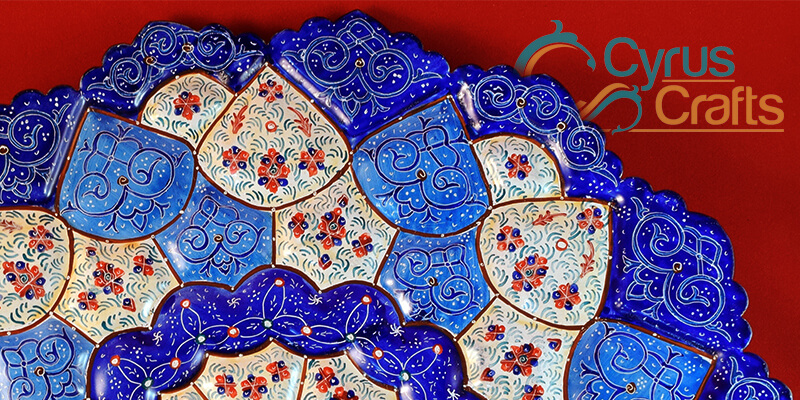
Retail and Wholesale of Minakari
Many retailers and wholesalers today offer Minakari products in bulk or singly. So, finding retail and wholesale Mina kari items seems relatively straightforward. But, finding a reliable source is still crucial. CyrusCrafts offers the highest quality Persian Minakari handicrafts at the fairest prices, individually or in bulk, for B2B wholesales.
Our wholesales retain competitive expenses and a hassle-free procurement process for buying in larger quantities. CyrusCrafts provides a seamless wholesale experience, guaranteeing that your business receives grade-one Persian art pieces to fulfill your customers' needs.
CyrusCrafts Minakari Products
All CyrusCrafts' handicraft products, like Minakari, are one-of-a-kind because they are 100% handmade. Furthermore, we only work with the producers who present the highest quality. So you can be sure you are buying the best minakari items without dealers directly from reliable sources. CyrusCrafts offers particular products and excellent wholesale suggestions as B-to-B deals.
You just read a complete guide about Minakari or Mina Kari enameling art. Mina is one of the oldest ancient Persian artworks. CyrusCrafts offers the world unique Persian handicrafts with the highest quality and prices. Only fill out the products' order form for ordering handmade Persian rugs and carpets, woodcarving furniture, decorative handicrafts, clothes, accessories, or organic foods. We will deliver your orders with free worldwide shipping and quick door-to-door delivery.


